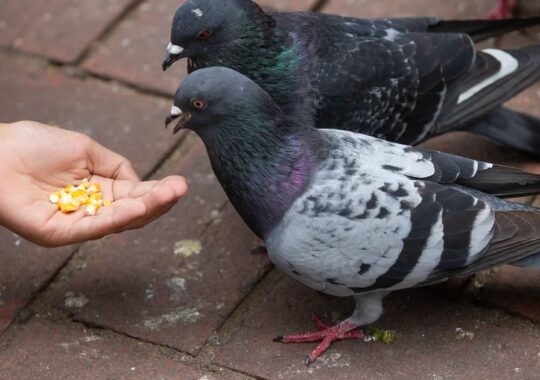In his telegram channel “Culture Worker” Stepan Botarev tells about how unnatural light distracts birds from their migratory routes, drives bats to starvation, and increases the risk of cancer in humans. In an article for the publication “Knife” he explainshow this happens, and gives advice on how each of us can help reduce light pollution.
The International Dark-Sky Association, or IDA, defines light pollution as “the inappropriate or excessive use of artificial light.” Its sources can be homes, offices, store windows, street and highway lights, billboards, stadiums and many other luminous objects created by man. Light pollution can take many forms, from bright directional light to “skyglow” – a phenomenon in which the night sky appears not dark, but rather grey-blue.
After their appearance on the market, energy-saving LED lamps began to quickly spread throughout the planet. If in 2010 they accounted for only 1% of all lighting devices in the world, then by 2020 this number had grown to 50%. But, despite being economical and environmentally friendly, the introduction of LED lamps led to another problem. People overuse them, resulting in over-lighting, and without shields, these much brighter bulbs scatter a lot of excess light in all directions. The leaders in light pollution in Europe are the UK, Italy, Romania, Ireland and Spain.
In small countries like Singapore, Kuwait and San Marino, the sky is so flooded with blue light that 99.5% of the stars accessible to human vision are completely indistinguishable without special instruments. NASA even created an atlas of light pollution to show the extent of the problem. The invention of the incandescent light bulb at the end of the 19th century changed our way of life once and for all. Now staying up after dark is a habit for many.
Research shows that being near artificial lights at night can negatively impact our circadian rhythms. As a result, we feel tired, our body temperature drops, and our metabolism slows down. The level of leptin, a hormone that extinguishes hunger, also increases. Lighting at night, however, reduces melatonin production. In the morning, we are forced to wake up early to get to work or school, and end up in a vicious circle of chronic sleep deprivation.
Sources of blue light that harm our sleep can be not only LED lamps, but also the screens of our smartphones and laptops. The negative health effects, according to research, are not limited to poor sleep quality. Scientists have found a link between exposure to artificial light at night and diseases such as depression, memory loss, coronary artery disease, diabetes, obesity and even cancer (particularly breast, lung, colon and prostate cancer).
Another unexpected consequence of light pollution: Tree buds bloomed on average nine days earlier than normal. This has led to a longer pollination season for plants, increasing risks for asthmatics and people with other breathing problems. In Maryland, for example, early flowering caused a 17% increase in the number of hospitalized asthmatics.
Artificial lighting that interferes with these natural cycles also leads to unpredictable results in animals. In Australia, for example, the number of butterflies of the species Agrotis infusa has decreased by 99.5%. Among the causes of the disaster is light pollution. City lights at night disorient moths and other invertebrates. Instinctively flying towards the light, they often die of hunger without finding partners to mate with.
At the same time, one study demonstrated that artificial light also reduced the number of caterpillars: by 47% in shrubs and by 33% in grass compared to unlit areas. If insect numbers continue to decline – and 40% of insect species on Earth are already at risk of extinction – it will negatively impact food chains and lead to further declines in biodiversity.
Artificial lighting can also lead to the complete disappearance of some species in certain regions. And migratory birds also become victims of light pollution. 80% of them fly at night, and city lights throw them off their migration paths, forcing them to expend energy and putting them at risk of exhaustion. Surviving birds may also miss the optimal time for hunting and nesting. The list of victims of light pollution goes on. It even harms fish and corals. The good news is that light pollution, unlike chemical pollution, for example, is easily reversible with “ridiculously simple steps.”
So what should you do?
-
Turn off all unnecessary lights at night. If lights are left on in some rooms, use curtains, blinds or shutters.
-
Use night light only where it is really needed right now.
-
Turn off gadgets an hour before bed. Use blue light filter apps.
-
Choose light bulbs with warmer, yellowish shades. If you buy LED lamps, give preference to lamps with a color temperature of 3000 Kelvin and below.
-
Protect light bulbs with shields.
-
Use dimmable light bulbs.
-
Install motion sensors and timers.
Recent Study showedthat due to light pollution, in 20 years people will not see stars in the night sky. Including the Milky Way.
Olesya Mayevskaya



